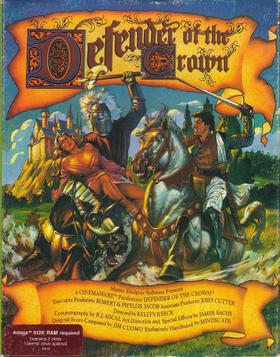
Defender of the Crown is a strategy video game designed by Kellyn Beeck. It was Cinemaware's first game, and was originally released for the Commodore Amiga in 1986, setting a new standard for graphic quality in home computer games.
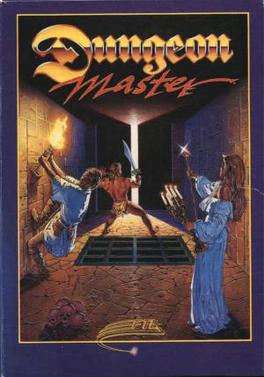
Dungeon Master is a role-playing video game featuring a pseudo-3D first-person perspective. It was developed and published by FTL Games for the Atari ST in 1987, almost identical Amiga and PC (DOS) ports following in 1988 and 1992.
Artworx was a Naples, Florida software company that produced and supported a line of computer games from 1981 to 2015. It is named after the founder's given name. At first the company published a variety of games, including titles in adventure and arcade-action genres, but were later best known for a strip poker series.

Time Bandit is a maze shoot 'em up written for the TRS-80 Model I by Bill Dunlevy and Harry Lafnear and published by MichTron in 1983. It was ported to the TRS-80 Color Computer and Dragon 32, but enjoyed its greatest popularity several years later as an early release for the Atari ST. It was also released for the pseudo-PC-compatible Sanyo MBC-55x with 8-color display. Amiga and MS-DOS versions were ported by Timothy Purves.
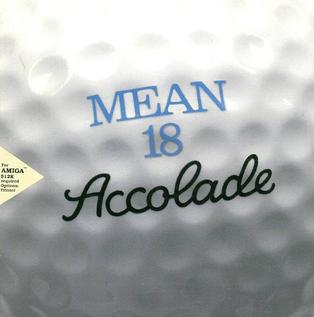
Mean 18 is a golf video game designed by Rex Bradford with graphics by George Karalias, both of Microsmiths, and released by Accolade for MS-DOS compatible operating systems in 1986. It was ported to the Amiga, Apple IIGS, Atari ST, and Macintosh. It includes an editor allowing players to create their own courses. In 1989, Atari Corporation published a port for the Atari 7800 console. An Atari 8-bit family version was in development in 1989 but was ultimately cancelled.

Indiana Jones and the Last Crusade: The Action Game was published in 1989 by Lucasfilm Games, based on the film of the same name. The game was released for the ZX Spectrum, Amstrad CPC, Commodore 64, Atari ST, Amiga, IBM PC, MSX, Master System, NES, Game Boy, Sega Genesis and Game Gear.

Hostages is a 1988 tactical shooter video game developed and published by Infogrames for the Acorn Electron, Archimedes, Atari ST, Amiga, Apple IIGS, Amstrad CPC, BBC Micro, Commodore 64, MS-DOS, MSX, Nintendo Entertainment System, and ZX Spectrum. The game depicts a terrorist attack and hostage crisis at an embassy in Paris, with the player controlling a six-man GIGN counterterrorist team as they are deployed to defeat the terrorists and free their hostages.

Bomberman, also known as Dyna Blaster in Europe, is an action-maze video game originally developed and published by Hudson Soft for the PC Engine in Japan on 7 December 1990 and later in North America for the TurboGrafx-16 by NEC in 1991. Belonging to the Bomberman franchise, it is a re-imagining of the first game in the series starring White Bomberman on a quest to rescue Lisa, the kidnapped daughter of his inventor Dr. Mitsumori, from the castle of Black Bomberman while defeating evil monsters and villains that work for him. The game was later ported to home computers, each one featuring changes compared to the original version. Conversions for other platforms were in development but never released. The title garnered positive reception from critics since its initial release on the PC Engine/TurboGrafx-16 and later on home computers.

Test Drive is a racing video game developed by Distinctive Software and published by Accolade, released in 1987 for the Amiga, Atari ST, Commodore 64, and DOS, in 1988 for the Apple II, and later ported for the PC-98 in 1989. It is the first game in the Test Drive series.

Tiger Road is a hack and slash platform game originally released in 1987 as a coin-operated arcade video game.

Jack Nicklaus' Greatest 18 Holes of Major Championship Golf is a golf-simulation video game developed by Sculptured Software, and published by Accolade beginning in 1988. It was released for the Amiga, Amstrad CPC, Apple IIGS, Atari ST, Commodore 64 (C64), MS-DOS, Macintosh, MSX, Nintendo Entertainment System (NES), PC-88, Sharp X68000, and Game Boy.

Rings of Medusa is a fantasy-themed video game developed and published by Starbyte Software for the Amiga, Atari ST, Commodore 64, and MS-DOS in 1989. The game is a hybrid of role-playing, strategy, and trading genres. It received mixed reviews.

P-47: The Phantom Fighter is a 1988 horizontally scrolling shooter arcade video game originally developed by NMK and published by Jaleco. Set during World War II, players control a Republic P-47 Thunderbolt fighter aircraft to face against the Nazis, who are occupying multiple countries around the world. Its gameplay involves destroying waves of enemies, picking up power-ups and new weapons, and destroying bosses. It ran on the Mega System 1 hardware.

Sex Vixens from Space is an erotic interactive fiction game developed and self-published by Free Spirit Software and originally released in 1988 for the Commodore 64 and Apple II as part of the compilation Sex And Violence Vol. 1. It was released as a standalone game, with the addition of graphics, in November 1988 for DOS and Amiga and in 1989 for the Atari ST. Sex Vixens was inspired by the 1974 sexploitation film Flesh Gordon. The game was panned by reviewers.

Trump Castle is a series of gambling video games published by Capstone Software between 1989 and 1993. The games are named after Trump's Castle hotel-casino in Atlantic City, New Jersey, and were released for Amiga, Atari ST, Commodore 64, Commodore 128, and MS-DOS.

Ghostbusters II is a 1989 action game based on the film of the same name. It was published by Activision for various computer platforms. British studio Foursfield developed a version for Commodore 64, Amiga, Atari ST, Amstrad CPC and ZX Spectrum, which also got ported to the MSX by New Frontier. It features three levels based on scenes from the film. Dynamix developed a separate version for the DOS, also based on the film. The non-DOS versions were praised for the graphics and audio, but criticized for long loading times, disk swapping, and the final level. The DOS, Commodore 64 and Amiga versions were the only versions released in North America.
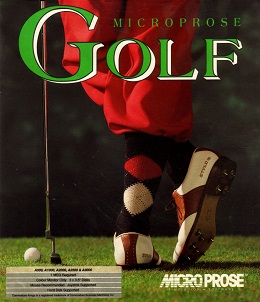
MicroProse Golf is a golf video game developed by The Thought Train and published by MicroProse. It was released in 1991 for Amiga and Atari ST. In 1992, an enhanced MS-DOS version, featuring golf instructor David Leadbetter, was released in the United States as David Leadbetter's Greens and in the United Kingdom as David Leadbetter's Golf. The game's variety was praised, and some critics considered it the best golf game available.
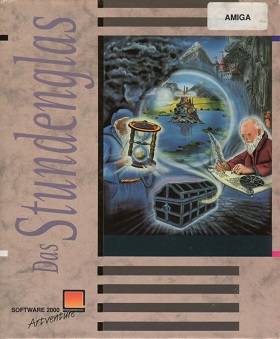
Das Stundenglas is a German text adventure game published in 1990 by Software 2000 and developed by Weltenschmiede, and released for Amiga, Atari ST and DOS. Das Stundenglas is part of a text adventure trilogy; it is succeeded by Die Kathedrale (1991) and Hexuma (1992). The trilogy lacks an overarching plot, and in each entry the setting, role of the protagonist, and goal differ between each game. Games in the trilogy do not require knowledge of the other entries and may be played as standalone games.

Centerfold Squares, retitled Centrefold Squares in Europe, is an erotic puzzle game originally developed and self-published by Artworx and released in 1988 for the Amiga, Atari ST and DOS. The game is a variation of Reversi where rectangular sections of an image of a nude model are revealed as the player earns points. Centrefold Squares was published by CDS Software in Europe, and published by Proein S.A under the original American title in Spain.
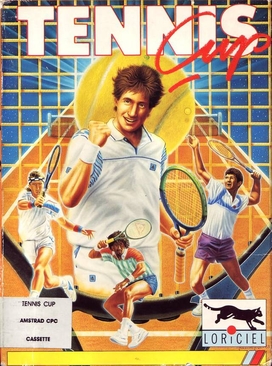
Tennis Cup is a 1990 tennis video game developed and published by Loriciel for the Amiga. It was ported to the Atari ST, MS-DOS and Amstrad CPC during the same year. Tennis Cup was ported to TurboGrafx-16 in 1991 as Davis Cup Tennis. Versions for the Super Nintendo and Mega Drive/Genesis were released in 1993.



















